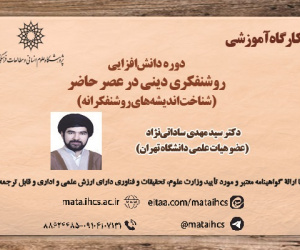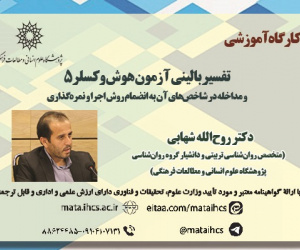عوامل رفتاری سبز در سازمان های هزاره سوم: بررسی نقش رهبری تحول آفرین سبز بر خلاقیت سبز کارکنان در راستای بهبود و تحول انگیزش سبز کارکنان (مقاله علمی وزارت علوم)
درجه علمی: نشریه علمی (وزارت علوم)
آرشیو
چکیده
رهبری تحول آفرین سبز، گونه ای از رهبری سازمانی است که می تواند در خلق ایده های نو و دوستدار محیط زیست توسط کارکنان مؤثر باشد. هدف اصلی تحقیق حاضر، تأثیر رهبری تحول آفرین سبز بر خلاقیت سبز کارکنان با نقش میانجی انگیزه درونی و بیرونی سبز در سازمان های هزاره سوم است. پژوهش حاضر از نوع پژوهش های کاربردی بوده و ازنظر شیوه انجام پژوهش جزء پژوهش های توصیفی-پیمایشی است. در این تحقیق از پرسشنامه استاندارد استفاده شد. بدین منظور متغیر خلاقیت سبز از تحقیق چِن و چانگ (2013)، رهبری تحول آفرین سبز از ژانگ (2020 انگیزه درونی سبز از تحقیق دِسی (2015)، آمابیل و همکارن (1994) گویه های استخراج شده اند و جامعه آماری آن، مدیران و کارکنان اداره کل ورزش و جوانان استان البرز است که باتوجه به محدودبودن حجم جامعه آماری، محاسبه حجم نمونه با استفاده از فرمول کوهن صورت پذیرفت که تعداد 51 پرسشنامه برگشت داده شد. داده های جمع آوری شده توسط پرسشنامه با استفاده از روش مدل سازی معادلات ساختاری و نرم افزارهای AMOS17.0 و SPSS26 تجزیه و تحلیل شده است. یافته های تحقیق نشان می دهند که رهبری تحول آفرین سبز به طور مستقیم تأثیر معناداری بر خلاقیت سبز کارکنان داشته و انگیزه درونی و بیرونی سبز نیز به عنوان متغیرهای میانجی رابطه بین رهبری تحول آفرین سبز و خلاقیت سبز کارکنان را تقویت می نماید. نتایج این مطالعه نشان می دهند که سبک رهبری تحول آفرین سبز و متغیرهای آن، به عنوان یکی از عوامل مؤثر بر خلاقیت سبز کارکنان است و رهبران تحول آفرین سبز می توانند ازطریق تقویت انگیزه درونی و بیرونی سبز، خلاقیت سبز کارکنان را افزایش دهند و در زمینه توسعه و تعالی سازمانی، مثمرثمر باشند.Green Behavioral Factors in the Third Millennium Organizations: Investigating the Role of Green Transformational Leadership on the Green Creativity of Employees in Order to Improve and Transform the Employees Green Motivation
Green transformational leadership is a type of organizational leadership that can effectively foster innovative and environmentally friendly ideas among employees. The primary objective of this research is to examine the impact of green transformational leadership on employees' green creativity, with a focus on the mediating roles of green intrinsic and extrinsic motivation in 21st-century organizations. This study is classified as applied research and utilizes a descriptive-survey methodology. A standard questionnaire was employed, drawing on established research: green creativity from Chen and Chang (2013), green transformational leadership from Zhang (2020), and green intrinsic motivation from Deci (2015) and Amabile et al. (1994). The statistical population consists of managers and employees from the Sports and Youth Department of Alborz Province. Given the limited size of the population, the sample size was calculated using Cohen's formula, resulting in 51 returned questionnaires. Data collected through the questionnaire were analyzed using structural equation modeling (SEM) with AMOS 17.0 and SPSS 26 software. The findings indicate that green transformational leadership has a direct and significant impact on employees' green creativity. Additionally, both green intrinsic and extrinsic motivation serve as mediating variables that strengthen the relationship between green transformational leadership and employees' green creativity. The results highlight that the green transformational leadership style and its associated variables are crucial factors influencing employees' green creativity. Green transformational leaders can enhance this creativity by fostering both intrinsic and extrinsic motivation among their employees, thereby contributing positively to organizational development and excellence.







